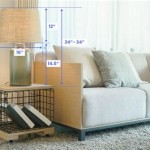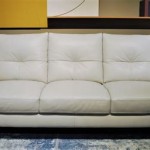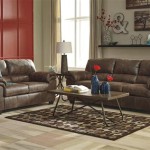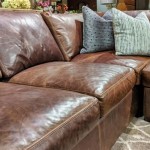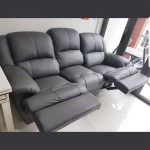Adding Legs to a Sectional Sofa: A Comprehensive Guide
Sectional sofas are a popular furniture choice for many homes due to their versatility and ability to maximize seating space. However, many sectional sofas are designed with low profiles or come without legs altogether, sitting directly on the floor. While this design aesthetic appeals to some, adding legs to a sectional sofa can provide a number of functional and aesthetic benefits. This article explores the reasons for adding legs, the types of legs available, the necessary tools and materials, and a step-by-step guide to installing legs on a sectional sofa.
Reasons for Adding Legs to a Sectional Sofa
Several factors contribute to the decision to add legs to a sectional sofa. These factors often relate to improved ergonomics, aesthetics, and practical considerations such as cleaning accessibility.
One primary benefit is improved ergonomics. Raising the height of the sofa can make it easier to sit down and stand up, particularly for elderly individuals or those with mobility issues. A higher seating position can also promote better posture and reduce strain on the back and knees. The standard sofa seat height is typically between 16 and 20 inches. If the existing sectional sofa falls below this range, adding legs can significantly enhance its comfort and usability.
Improved aesthetics is another significant reason. Legs can dramatically alter the appearance of a sectional sofa, lending it a more sophisticated or contemporary look. The choice of leg style, material, and finish can complement the existing décor and create a more visually appealing living space. Adding legs can also create a greater sense of space in a room. Lifting the sofa off the floor allows light and air to circulate underneath, making the room feel less cramped and more open. This is particularly beneficial in smaller living areas.
Improved cleaning accessibility is a practical advantage. When a sectional sofa sits directly on the floor, it can be difficult to clean underneath it, leading to a buildup of dust, dirt, and pet hair. Adding legs provides clearance for vacuum cleaners and other cleaning tools, ensuring that the area under the sofa remains clean and hygienic. This is especially important for individuals with allergies or respiratory sensitivities.
Furthermore, adding legs can sometimes address uneven flooring. Minor imperfections in the floor can cause a sectional sofa to wobble or feel unstable. Legs offer an opportunity to level the sofa, providing a more stable and comfortable seating experience. Legs with adjustable feet are particularly useful for addressing uneven surfaces.
Types of Sofa Legs
The market offers a wide variety of sofa legs in different styles, materials, and heights. The selection of the right type of leg depends on the desired aesthetic, the construction of the sectional sofa, and the weight it needs to support.
Wooden legs are a classic choice, offering warmth and versatility. They are available in various wood types, such as oak, maple, walnut, and birch, each with its own unique grain pattern and color. Wooden legs can be stained or painted to match existing furniture or to create a contrasting accent. They come in various styles, including tapered legs, spindle legs, and block legs, each contributing a different visual appeal.
Metal legs offer a more modern and industrial aesthetic. They are typically made of steel, aluminum, or chrome, and can be finished in a variety of colors and textures. Metal legs are known for their durability and strength, making them a good choice for supporting heavier sectional sofas. Common styles include straight legs, angled legs, and hairpin legs.
Plastic legs are a budget-friendly option, often used in mass-produced furniture. While they may not be as aesthetically pleasing as wood or metal, they are durable and lightweight. Plastic legs are typically available in black, white, or grey, and can be easily cleaned. However, they may not be suitable for supporting very heavy sectional sofas.
Adjustable legs are a practical choice for addressing uneven flooring. These legs feature a threaded base that can be adjusted to raise or lower the height of each leg individually. This allows for precise leveling of the sectional sofa, ensuring stability and comfort. Adjustable legs are available in both metal and plastic.
The height of the legs is another important consideration. The ideal height depends on personal preference and the desired overall height of the sofa. Common leg heights range from 4 inches to 8 inches, but taller or shorter legs may be available depending on the supplier. It is important to measure the existing height of the sofa before selecting legs to ensure the desired final height is achieved. Consider the existing furniture in the room and aim for a consistent height to maintain visual harmony.
Tools and Materials Required for Installation
Before beginning the installation process, it is essential to gather the necessary tools and materials. Having everything readily available will make the process smoother and more efficient.
A drill with appropriate drill bits is essential for creating pilot holes and attaching the legs to the sofa frame. The size of the drill bit will depend on the size of the screws or bolts used to secure the legs. A screwdriver (either manual or powered) is also necessary for tightening the screws or bolts. A Phillips head screwdriver is typically the most common type used for furniture assembly.
A measuring tape is crucial for accurately positioning the legs and ensuring they are evenly spaced. A level is needed to ensure the sectional sofa is level once the legs are installed. This is particularly important if the floor is uneven. A pencil is used for marking the location of the pilot holes.
The correct type and size of screws or bolts are essential for securely attaching the legs to the sofa frame. The type of fastener used will depend on the construction of the sofa frame and the type of legs being installed. Wood screws are typically used for attaching legs to wooden frames, while bolts with washers and nuts may be used for attaching legs to metal frames. Consider using furniture t-nuts. These are inserted into the wood frame and allow you to screw bolts into them, providing a strong and secure connection.
Depending on the construction of the sofa frame, it may be necessary to use wood filler to reinforce the attachment points or to repair any existing damage. Wood glue can also be used to strengthen the bond between the legs and the frame. Safety glasses should always be worn to protect the eyes from debris during drilling and screwing. Gloves can also be worn to protect the hands.
A stud finder may be helpful for locating solid wood framing within the sofa, to ensure screws and bolts are going into solid material. This provides a more secure attachment than screwing into thin plywood.
Step-by-Step Guide to Installing Sofa Legs
The installation process involves several steps, from preparing the sofa to attaching the legs and ensuring stability. Following these steps carefully will ensure a successful installation. Before starting, it's important to inspect the underside of the sectional sofa to determine the best location for attaching the legs. Look for solid wood framing or reinforced areas that can provide a secure anchor point.
First, carefully turn the sectional sofa upside down. This may require assistance from another person, as sectional sofas can be heavy and awkward to move. Protect the floor with a blanket or drop cloth to prevent scratches or damage. Locate the desired attachment points on the underside of the sofa. Use the measuring tape to ensure the legs will be evenly spaced and positioned in a way that provides optimal support. Mark the location of each leg with a pencil.
Next, pre-drill pilot holes at the marked locations. Use a drill bit that is slightly smaller than the diameter of the screws or bolts being used. This will make it easier to drive in the fasteners and prevent the wood from splitting. If using furniture t-nuts, install them according to the manufacturer's instructions.
Attach the legs to the sofa frame using the appropriate screws or bolts. Ensure the legs are aligned properly and that the fasteners are tightened securely. Avoid over-tightening the fasteners, as this could damage the sofa frame. Check the stability of each leg as it is being attached.
Once all the legs have been attached, carefully turn the sectional sofa upright. Use the level to check that the sofa is level. If necessary, adjust the height of the adjustable legs to compensate for uneven flooring. Once the sofa is level, double-check that all the fasteners are tightened securely. Test the sofa by sitting on it and moving around to ensure it is stable and comfortable.
If any of the attachment points feel weak or unstable, reinforce them with wood filler or additional screws. Add corner braces for increased stability, particularly if the sectional sofa is frequently moved or bears heavy loads. Regularly inspect the legs and fasteners to ensure they remain tight and secure. Periodically tighten the fasteners as needed to prevent loosening over time.
Adding legs to a sectional sofa can enhance both its functionality and aesthetics. By carefully selecting the right type of legs and following the proper installation procedures, it is possible to transform a low-profile sectional into a stylish and comfortable piece of furniture.

Couch Legs Adding Or Changing 5 Steps With Pictures Instructables

Diy Affordable Sofa Makeover How To Replace Legs Livingroommakeover Homedecor

Diy Affordable Sofa Makeover How To Replace Legs Livingroommakeover Homedecor

How To Update Sofa Legs My Frugal Adventures

Prescott View Home Reno Add Legs To Couches

Prescott View Home Reno Add Legs To Couches

Adding Legs To An Sofa Diy Without Fear

Changing Legs On Sofa

How We Raised The Kivik Sectional Higher Off Ground Ers Sofa Couch

How To Attach Sofa Legs A Step By Living Spaces

